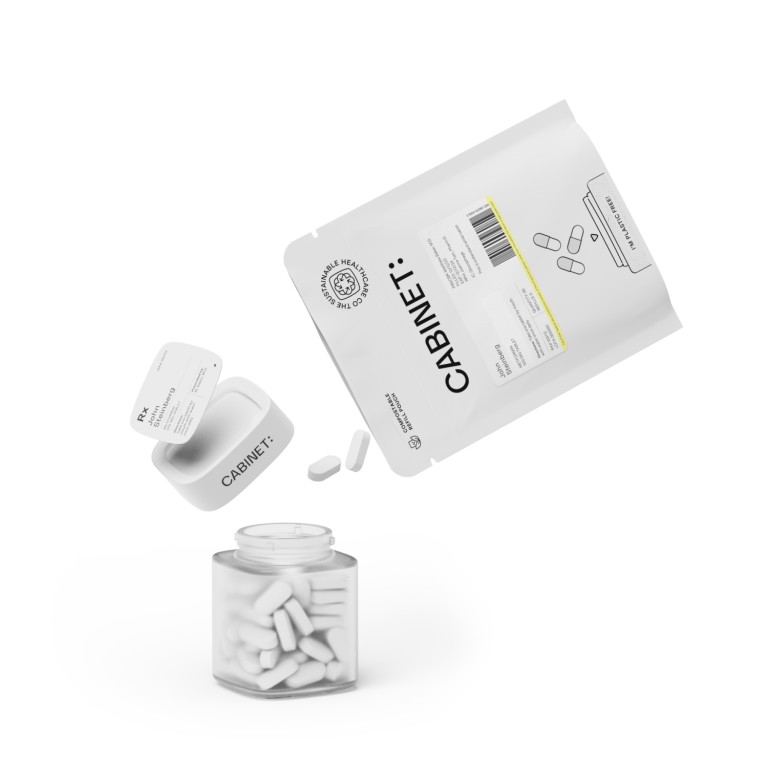Tenofovir is a medication that has revolutionized the field of HIV treatment and prevention. In this article, we will explore the various aspects of tenofovir, from its history and chemical composition to its role in both HIV treatment and prevention. We will also discuss the side effects and risks associated with tenofovir, as well as the future perspectives and ongoing research surrounding this crucial drug.
Understanding Tenofovir: An Overview
The History of Tenofovir
Tenofovir was first approved by the U.S. Food and Drug Administration (FDA) in 2001 for the treatment of HIV infection. Since then, it has become one of the most widely used antiretroviral drugs worldwide. Its effectiveness and safety profile have made it a cornerstone of HIV treatment and prevention strategies.
Over the years, Tenofovir has played a crucial role in the management of HIV/AIDS, significantly improving the quality of life and life expectancy for many individuals living with the virus. Its introduction marked a turning point in the fight against HIV, offering new hope and treatment options to those affected by the disease.
The Chemical Composition of Tenofovir
Tenofovir belongs to a class of drugs called nucleoside reverse transcriptase inhibitors (NRTIs). Its active ingredient is tenofovir disoproxil fumarate (TDF). Tenofovir disoproxil fumarate is a prodrug, meaning it needs to be converted into its active form, tenofovir diphosphate, inside the body to exert its antiviral effects.
Chemically, tenofovir disoproxil fumarate is a white to off-white crystalline powder with a molecular formula of C19H30N5O10P and a molecular weight of 635.51 g/mol. Its structure consists of a nucleotide analogue of adenosine monophosphate, which interferes with the HIV reverse transcriptase enzyme, ultimately inhibiting viral replication.
Tenofovir in HIV Treatment
The Role of Tenofovir in Antiretroviral Therapy
Tenofovir is a key component of combination antiretroviral therapy (ART) for the treatment of HIV infection. ART typically involves a combination of three or more antiretroviral drugs to suppress the virus and prevent its replication. Tenofovir, when used in combination with other drugs, helps to reduce the viral load and improve the immune function of individuals living with HIV.
Furthermore, Tenofovir is classified as a nucleotide reverse transcriptase inhibitor (NRTI), which means it works by blocking an enzyme called reverse transcriptase, essential for the replication of the HIV virus. By inhibiting this enzyme, Tenofovir helps to slow down the progression of HIV and reduce the viral load in the body, ultimately leading to better health outcomes for patients.
The Effectiveness of Tenofovir in HIV Treatment
Studies have consistently shown the effectiveness of tenofovir in reducing HIV viral load and improving the overall health outcomes of individuals living with HIV. In fact, according to a study published in the Journal of the American Medical Association, the use of tenofovir-based regimens led to a 93% reduction in the risk of HIV transmission among serodiscordant couples.
Additionally, tenofovir has been shown to be effective in reducing the risk of mother-to-child transmission of HIV during pregnancy and breastfeeding. This has been a significant breakthrough in preventing new HIV infections in infants.
Moreover, Tenofovir is known for its high genetic barrier to resistance, meaning that the development of resistance to the drug is less likely compared to other antiretroviral medications. This characteristic makes Tenofovir a reliable and durable option for long-term HIV treatment, especially in cases where patients may need to switch medications due to resistance issues.
Tenofovir in HIV Prevention
Tenofovir as Pre-Exposure Prophylaxis (PrEP)
In recent years, tenofovir has also gained recognition as a powerful tool in HIV prevention. When used as pre-exposure prophylaxis (PrEP), tenofovir can significantly reduce the risk of acquiring HIV through sexual contact or injection drug use. According to a study published in The Lancet, individuals who took tenofovir-based PrEP consistently experienced a 92% reduction in HIV transmission.
One of the key advantages of tenofovir-based PrEP is its flexibility in usage. It can be taken daily or on-demand, depending on the individual's needs and lifestyle. This adaptability has made it a popular choice among those seeking an effective method of HIV prevention without the need for strict adherence to a fixed regimen.
The Impact of Tenofovir on HIV Transmission Rates
The use of tenofovir-based PrEP has shown remarkable results in reducing HIV transmission rates. In fact, the Centers for Disease Control and Prevention (CDC) estimates that widespread adoption of PrEP could prevent up to 48,000 new HIV infections in the United States alone over a 10-year period.
Furthermore, tenofovir-based PrEP has been instrumental in changing the landscape of HIV prevention strategies. By providing individuals at high risk of HIV exposure with a proactive method of protection, it has empowered them to take control of their sexual health and reduce the stigma associated with HIV prevention.
The Side Effects and Risks of Tenofovir
Common Side Effects of Tenofovir
Like any medication, tenofovir is associated with potential side effects. Some common side effects include gastrointestinal symptoms such as nausea, diarrhea, and abdominal pain. However, these side effects are usually mild and tend to subside over time.
It is important for individuals taking tenofovir to be aware of these common side effects and to report any persistent or severe symptoms to their healthcare provider. In some cases, adjustments to the dosage or timing of the medication may help alleviate these symptoms without compromising the effectiveness of the treatment.
Long-Term Risks and Considerations
Long-term use of tenofovir has been associated with rare but serious side effects, including bone loss and kidney problems. It is important for healthcare providers to monitor individuals on tenofovir therapy regularly and adjust treatment regimens when necessary. Moreover, it is crucial for patients to discuss any concerns or potential risks with their healthcare team.
Patients who are prescribed tenofovir for extended periods should undergo regular bone density and kidney function tests to detect any potential issues early. By closely monitoring these parameters, healthcare providers can intervene promptly if any complications arise, ensuring the overall well-being of the patient throughout the course of treatment.
Future Perspectives on Tenofovir
Ongoing Research and Developments
Researchers are continuously exploring new ways to improve the effectiveness and safety profile of tenofovir. Ongoing research includes the development of new formulations with reduced side effects, such as tenofovir alafenamide (TAF). TAF has shown promising results in terms of maintaining virological suppression with reduced bone and kidney toxicity.
Moreover, recent studies have also focused on investigating the potential of incorporating novel drug delivery systems to enhance the bioavailability and targeted delivery of tenofovir. Nanotechnology-based approaches, for instance, have shown promising results in improving the drug's pharmacokinetics and reducing the frequency of dosing, thereby enhancing patient adherence to treatment regimens.
The Potential of Tenofovir in Future HIV Management
The future of tenofovir looks promising, with the potential for new formulations and combination therapies that may offer improved outcomes for individuals living with HIV. As more research is conducted and new discoveries are made, tenofovir will continue to play a vital role in HIV treatment and prevention strategies.
Furthermore, ongoing clinical trials are exploring the efficacy of tenofovir-based long-acting injectable formulations, which could revolutionize the landscape of HIV management by providing extended protection with reduced dosing frequency. These innovative formulations aim to address challenges related to treatment adherence and offer a convenient alternative for individuals requiring long-term antiretroviral therapy.
In conclusion, tenofovir has undoubtedly become a cornerstone in both HIV treatment and prevention. Its effectiveness, combined with its relative safety profile, has made it an essential component of antiretroviral therapy and a powerful tool in reducing HIV transmission rates. However, it is crucial for healthcare providers and patients to remain vigilant and address any potential side effects or risks associated with tenofovir. With ongoing research and developments, we can expect even better outcomes in the future, further strengthening our fight against HIV.










